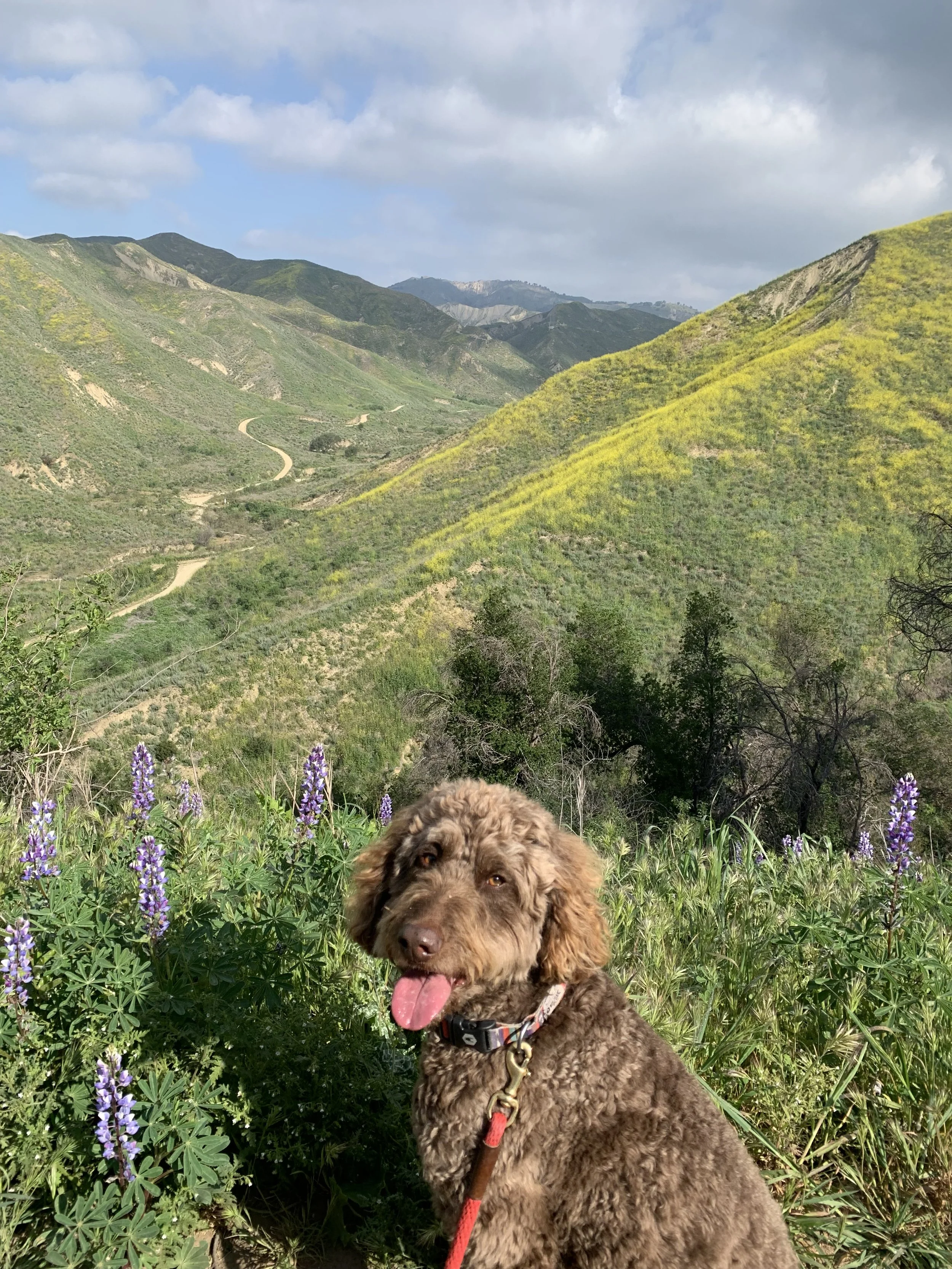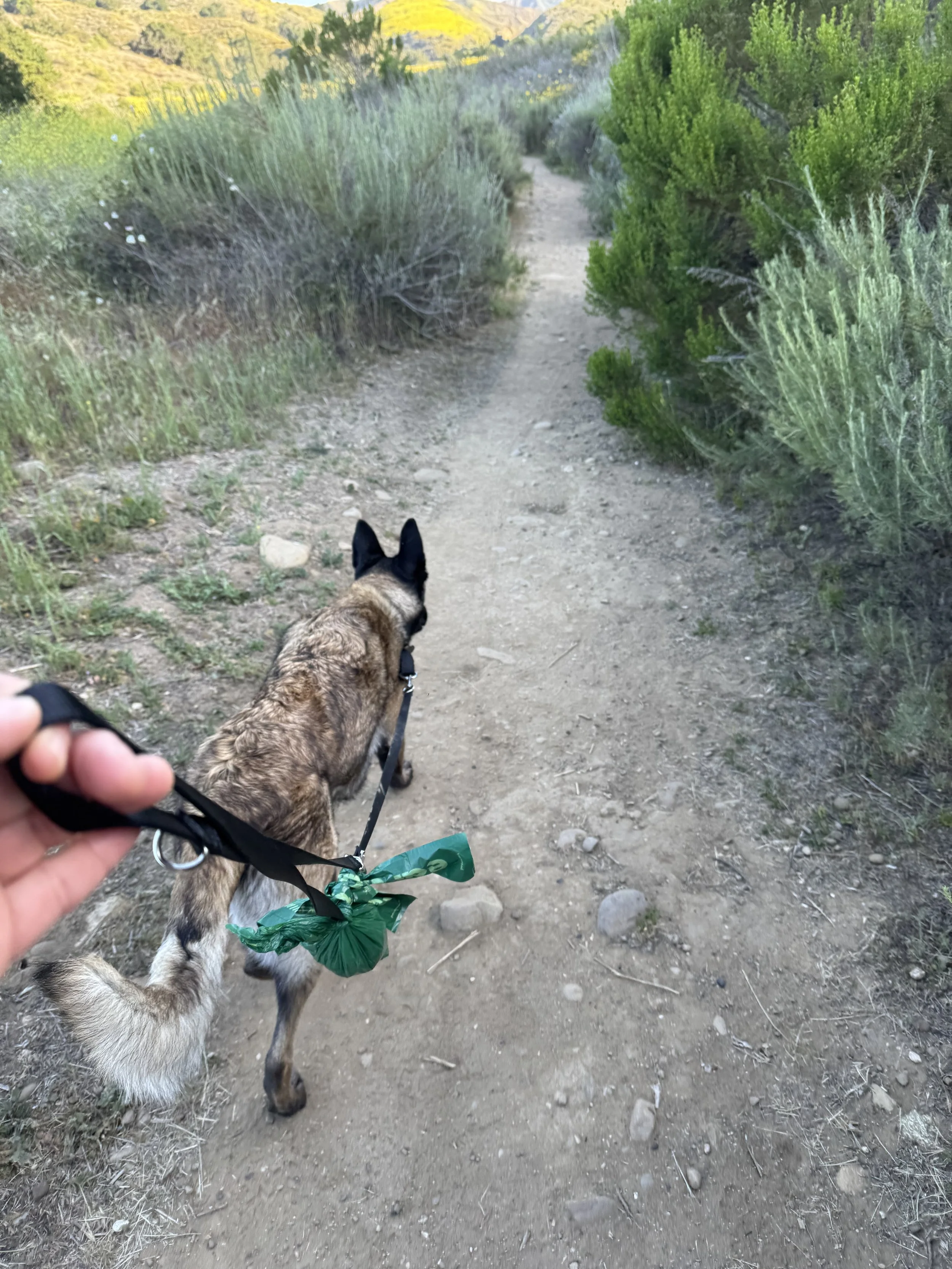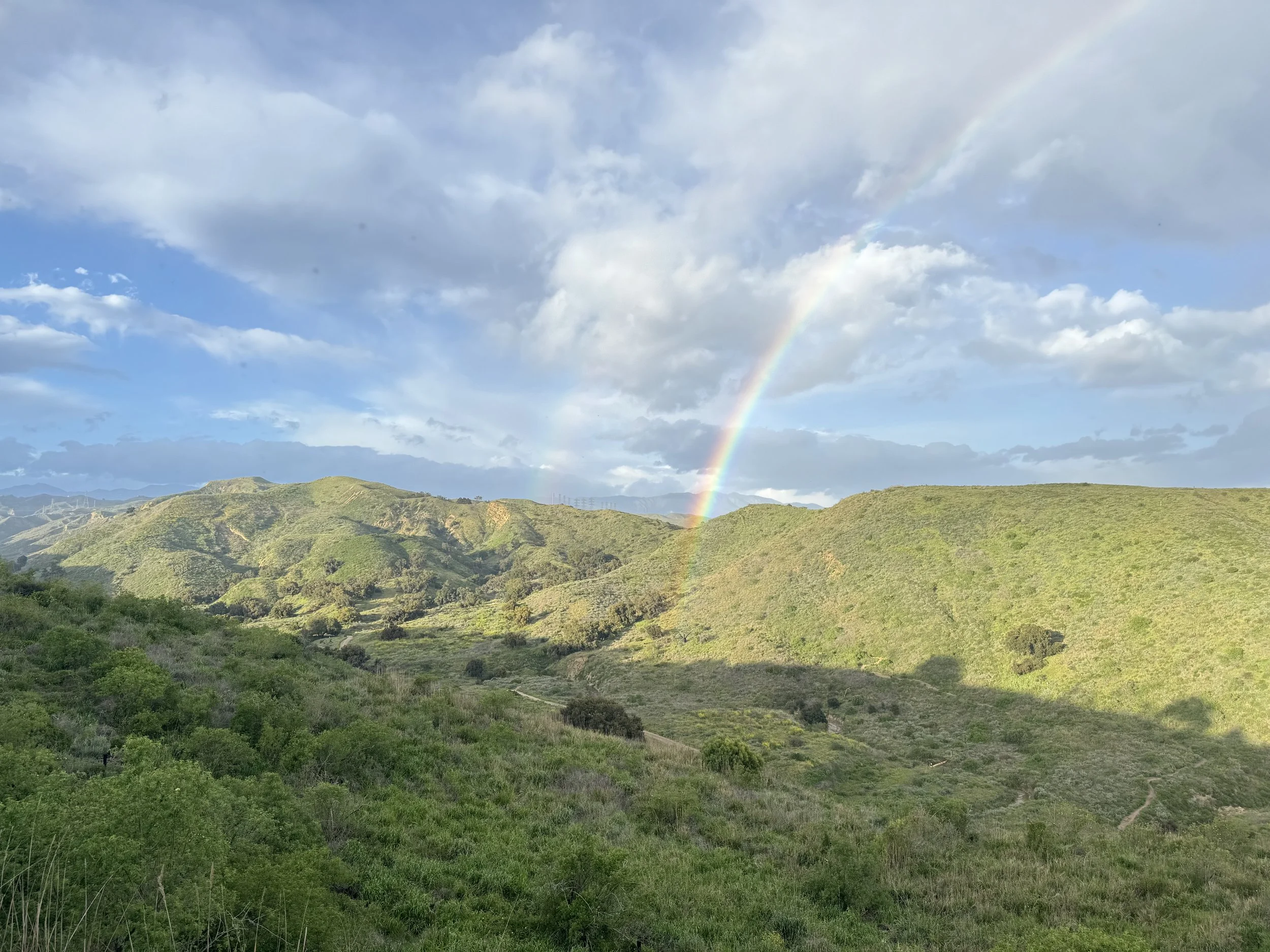Do Your Doody!
Most people enjoying natural areas know that leaving trash on the trail degrades both the environment and the experience for other human users, but a surprising number of people don't really think about dog poop as trash. While "natural", leaving poop on the trail changes the behavior of wildlife and contaminates runoff into our waterways with bacteria, parasites, and increased nitrification which buoys algae and invasive plant growth. Also, it’s a really smelly bummer to step into or ride through a fresh pile on accident. Sure, wildlife also poop, but wildlife populations are kept in dynamic balance (i.e. there aren’t as many coyotes living in Harmon Canyon Preserve as there are dogs that visit), and wild animals are consuming resources from within the ecosystem that evolved to cycle nutrients with their fecal contributions. Dogs are subsidized by us and our nitrogen and phosphorus rich dog foods and host a microbiome that is not endemic to our local ecosystem. They alter the complex nutrient cycle and biological community like we do, which is why nature lovers, ecological advocates, and recreationists know addressing the droppings of people and dogs in the environment is a critical component to meaningful Leave No Trace principles.
Surfrider and their Blue Water Task Force have a considerable pet waste cleanup campaign and estimate that there are about 210,000 dogs living in Ventura County, each dog produces about 274 pounds of poop on average, and only 60% of owners clean up their dog's waste. That is over 5,000 tons of dog feces remaining every year in our county watersheds. While individual dog owners might not think their one or two turds are a huge transgression, the actions of our collective pack are immensely impactful to our wildlands, waterways, and ocean environments, and affect both ecological function and the health of wildlife and humans alike. If only 25% of the visitors to Harmon Canyon Preserve bring dogs, that is about 25,000 dog visits per year. That’s a lot of potential poops!
And then there are the double doody derelicts--we've all seen their evidence, leaving bagged poop on the trail so that both plastic and feces contaminate our environment. With the best of intentions, it is not uncommon that people who don't want to spend their walk with a bag of poop in hand and plan to pick it up on the return trip, inadvertently forget to pick it back up--we've all done it.
While the spectacular show of spring is unfurling in Harmon Canyon Preserve, the increased number of visitors have left a grim reminder of their outdoor enjoyment. We find dozens of dog turds (yes, dogs and not coyotes) everyday, bagged and unbagged, along the trails of the preserve. A dismayed volunteer/angel, Joy Downing Riley, who works as the Blue Water Task Force Coordinator for Surfrider, makes regular rounds picking up dog doo along Harmon trails and collects 25 to 50 independent deposits in each visit. Not good.
If you are walking a dog out in the world, you know that sh*t happens, and can happen at any time. Please bring those bags, or pick up a few (they’re free!) at the park or wildland preserve you are visiting--Harmon has 2 bag stations. There are many clever ways to cart that turd around—you don’t have to hold it like a stinky hot potato. Here’s a thoughtful video by @LeaveNoTraceCenter that outlines a few simple ways to cart that caca handsfree. A favorite VLT staff version, is simply tying the bagged turd to the middle of the leash and then forget about it until a trash can is available. If your leash is smooth and the bag slides around, you can tie a temporary knot under your cargo to keep it midway between you and your dog so no one need be offended. Easy!
At Harmon Canyon, a recent donation by a generous supporter and regular dog walker will allow us to install a third poop station in the lower canyon to help encourage responsible poo management. But inevitably, a trash can might not be near when the need arises. Please do your part and encourage others to take responsibility for safely disposing of pet waste and protecting the ecological integrity, public safety, and quality experience that makes our wildlands so valuable.




